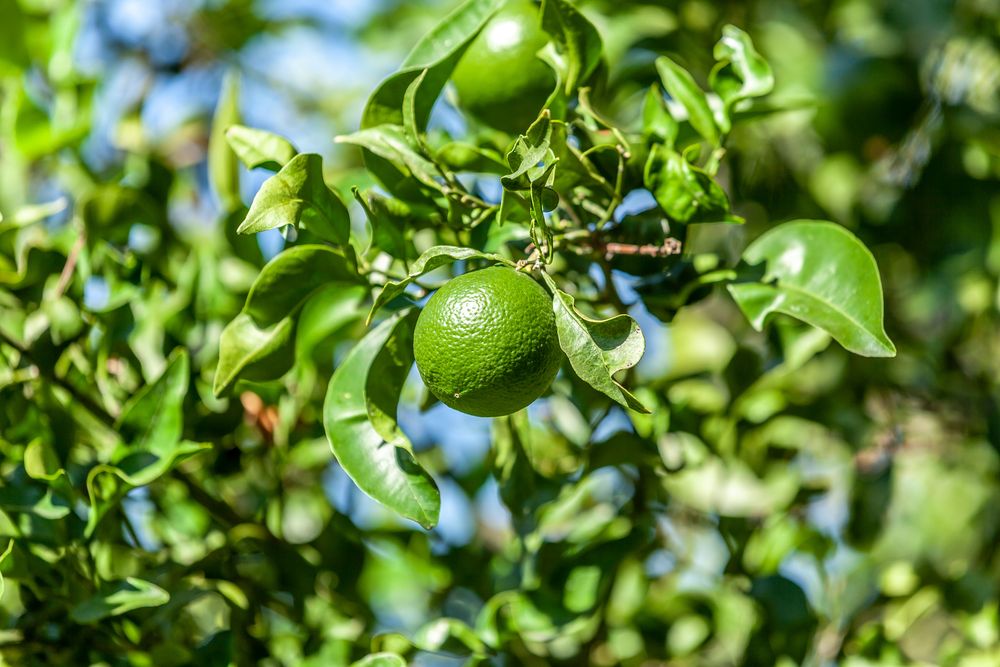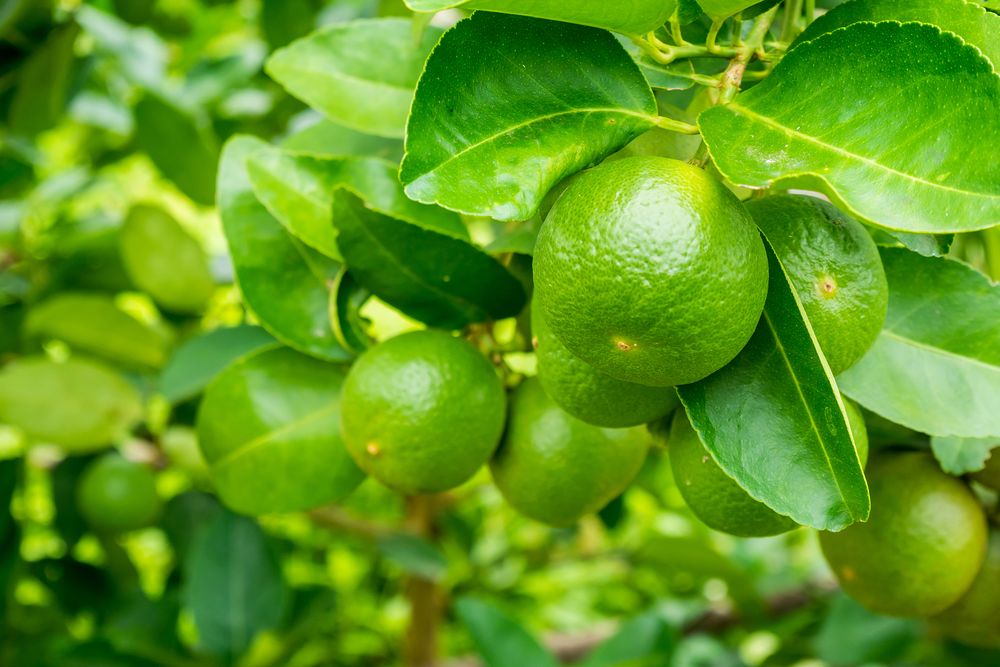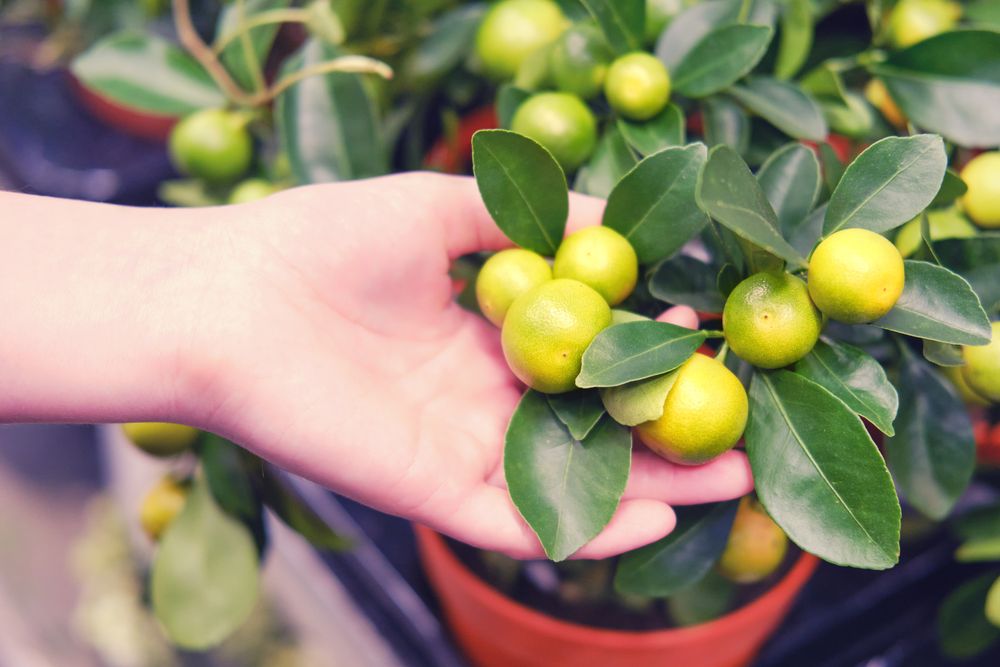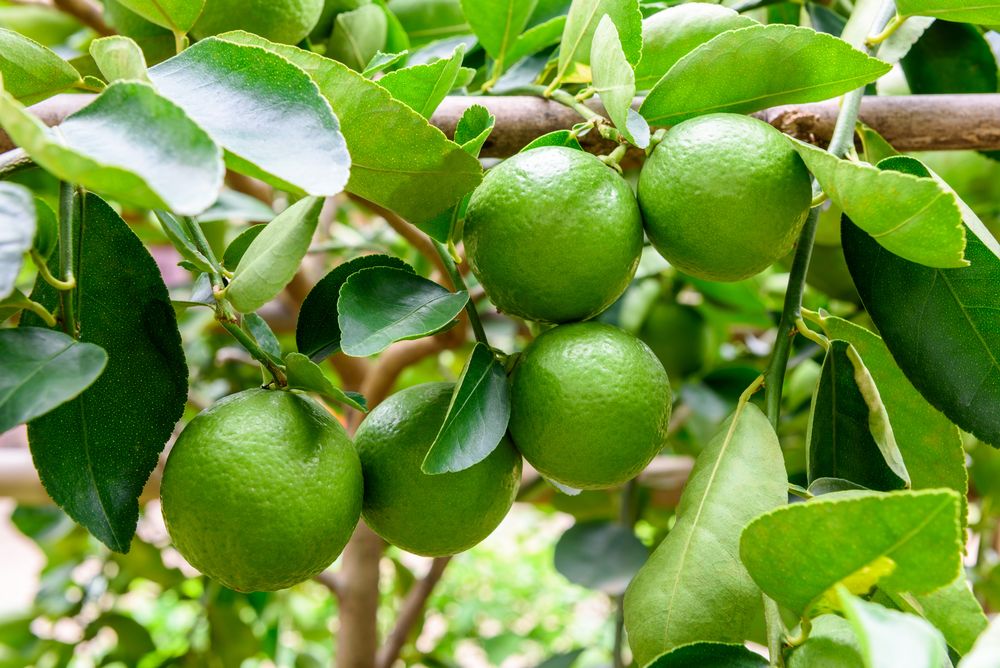Lime Tree Growing Problems And What To Do About Them
More than any other citrus variety, the lime tree has a lot of uses in the kitchen. The acidic fruits go into making everything from lemonades and smoothies to adding flavor to salads, marinades, and stews. Slices to lime garnish cocktails and add the right amount of sourness to alcoholic beverages.
Surprisingly, the lime tree is not problem-free. Many things could go wrong when growing this citrus in your garden. It could stop blossoming out of the blue, or if it did blossom, the flowers could fall off on their own even before pollination. The leaves could start to curl which is a sign the tree is either under attack or stressed for some reason. Not to mention pollination which is a tricky process and might require your intervention.
Lime Tree Leaf Curl
If the leaves of your lime tree start to curl this could be a real problem. Or it might be just normal lime tree behavior. It all depends on the time this happens. If it’s winter or even the fall with low temperatures, the curling leaves would be just a natural defense mechanism.
But if this behavior occurs in the spring or summer long after the last frost, then you have a problem on your hands. This problem could be diseases, pests, or inadequate watering. You’ll notice that the leaves curl down and maybe spots or holes appear on the surface. Before you try out any of the solutions we offer below, use a magnifying glass to get a better look at the leaf itself. The presence of discoloration or holes can tell you more about the cause of the problem.
How to Fix It
If the leaves are turning yellow besides curling down, then it’s a problem with irrigation. If there are holes or brown spots, then it could be a disease. Let’s go through each one of those causes and how to fix them.
- Water: If you overwater the tree or forget to water it for a long time, the stress would cause the leaves to curl and lose their glossy green appearance. In extreme situations, the leaves will dry out and become brittle. In the spring and summer, the tree needs watering once a week. In the fall and winter, it needs water once every 2 weeks.
- Pests: Aphids, spider mites, and leaf miners all suck the sap out of the leaf and cause stress. They might leave behind telltale signs such as tunnels inside the leaf in the case of leaf miners or sticky goo in the case of aphids. Treat the tree with neem oil spray to get rid of these pests and remove the infected leaves.
- Disease: If you notice lesions on the surface of the curled leaves or find spores, then the tree is infected with either bacterial diseases or fungal infections. Use copper-based fungicides to treat fungal infections.
Hand Pollinating Lime Trees
As self-pollinating trees, limes don’t need much help from you. However, you can’t always trust nature to take care of this vital process. If you notice that more limes are dropping before they’re ripe or even the blossoms don’t stay on the tree after pollination, chances are the bees that visited your garden that year didn’t do a good job.
This calls for you to intervene and hand pollinate the tree yourself. Why would you want to do that? To ensure that you have a good yield every year. Hand pollination ensures that every flower on the tree is well pollinated which translates into a higher crop. The process is simple and won’t take more than a few hours of your time. But it pays dividends when it comes time to harvest the ripe limes.
How to Fix It
If it happens to rain around the time the lime tree flowers are in full bloom, bees won’t come to the garden and the flowers will go unpollinated. Even if the bees do their job, sometimes you’d want to make sure every flower gets its fair share of pollen. This calls for hand pollination. So how can you do that?
- Wait for the male parts of the flowers (the anthers) to produce pollen. Under them, the female part (stigma) is waiting for the pollen to drop down at the right time.
- Use a soft paintbrush to collect the pollen on the anthers and brush them against the stigma. You can just shade the brush lightly to let the pollen fall and fertilize the stigma.
- Do this for every flower with ripe anthers.
- You can use pollen from one flower to fertilize another flower.
- If you have more than one tree, cross-pollinate the flowers to have a good yield.
Lime Tree Leaf Drop
We saw how the leaves of the lime tree tend to curl up or down as a sign of stress or in response to falling temperatures. But what if the leaves drop? We’re not just talking about a handful of leaves falling after strong winds. This is like the tree is shedding its leaves day after day non-stop. This is obviously a sign that the tree is struggling. So what causes lime tree leaf drop?
It could have to do with watering again. Drought, especially if it goes on for a long period of time, can cause the tree to shed its leaf to preserve its limited resources. It might also have to do with feeding the tree too much. As a self-sufficient plant, the lime tree gets most of its nutrients from the rich soil. It rarely needs fertilizing.
And finally, diseases could be behind the excessive leaf drop.
How to Fix It
Keep in mind that leaves dropping is a natural part of the lifecycle of the lime tree. Leaves get old, wither, and fall. That’s just part of life. But if the falling leaves leave empty spots in the canopy, then you have to treat the possible causes with the following remedies.
- Watering: Make sure the soil is well-draining to avoid issues with waterlogged soil. Give the tree enough water to soak the soil once a week in the spring and summer. It rarely needs more water than that. If you get a decent rainfall, about an inch a week on average, then that’s all the watering the tree needs.
- Feeding: As a general rule, don’t feed the lime tree unless it shows signs of stress due to poor soil. These signs include drooping leaves and pale colors. Only then would you apply a balanced 10-10-10 fertilizer or use slow-release organic compost. Too much feeding causes the leaves to drop. So if the tree is looking healthy, there’s no need to feed it.
- Diseases: Some diseases such as crown rot, root rot, and sooty mold can be behind the leaf drop in the lime tree. Luckily, they’re all treatable diseases and don’t leave a lasting impact on the tree after treatment.
Pruning Lime Trees
While pruning the lime tree is for the most part an ornamental decision, it can sometimes play a major role in the survival of the tree itself. This is more true of potted lime trees than those growing in the garden.
Due to their genetic structure, lime trees growing in containers tend to have less tolerance for cold temperatures. And although different lime varieties can grow in different hardiness zones, a general rule of thumb is to add one zone if you want to grow the tree as a potted plant. So a lime tree that is usually hardy to zone 6, can only be grown in a container in zone 7 and so on.
And that’s where pruning comes in. As part of winter preparation, you’ll need to prune the lime tree and unload some of those branches and leaves to conserve the tree’s resources.
How to Fix It
When pruning the lime tree choose the times when the tree is least active. Early spring and early fall are ideal times. Your goal is to improve airflow inside the tree’s canopy and encourage a bushy look.
If you’re pruning the tree to prepare it for the winter, then you should do this every year. For ornamental pruning, you can do that every other year.
Don’t prune the tree when it still has fruits on the branches. Wait until the fruits are ripe, harvest them, then prune the tree.
Cut any damaged, diseased, or intersecting branches. You can do this any time of the year and not necessarily when the tree is dormant.
The lime tree should have a pyramidal shape. That means its canopy should be heavy at the bottom and light at the top.
Dry Lime Fruit
It’s no secret that harvest time is the most exciting and anticipated time all year. Watching the lime fruit grow and ripen is a delight. So when around harvest time the fruits dry out all of a sudden, you have to find the cause of the problem and fix it to save the harvest for next year.
Dry lime fruit happens for many reasons. Usually, the skin of the lime turns light brown and it becomes crisp. The usually juicy lime is dry inside as well and the white flesh turns dark yellow. The fruit feels hard under the touch and if you press it too hard, the outer shell will break.
A lot of causes are responsible for dry lime fruit syndrome. From leaving the fruits on the tree long after harvest time to nutrition deficiency, stress, and watering problems.
How to Fix It
There’s no silver bullet for the dry lime fruit problem. You’ll need to examine the tree and try to figure out the real cause of the issue. Sometimes it’s more than one issue. Here are ways you can diagnose the problem correctly and take the right action.
- If until harvest time the limes were looking healthy and it’s now long past harvest time, then it’s a simple issue of harvesting the limes when they’re ripe. Over maturity leads to dry fruits.
- Check the soil pH regularly from the spring until late summer. Make sure the reading is between 6.0 and 6.5.
- Test the soil for nutrition deficiency once a year in the spring. If the nutrients in the soil have depleted, apply a balanced fertilizer once a year in the early spring. If that’s not enough, another application two months later might be necessary.
- Dry lime fruits could be a result of the tree being too young. It often happens in the first two years of the tree’s life. Once it establishes, this problem will go away on its own.
- Water the tree once a week with a good soaking and make sure the soil is well-draining.
Lime Blossoms Falling
While the lime tree leaves dropping is a serious problem, it’s not as serious as the lime blossoms falling. That’s because, without the blossoms, you won’t have any fruits to harvest. So what causes the blossoms to fall before their time?
It could have to do with the soil pH, improper watering, or just a natural process of lighting the load of an overloaded tree.
How to Fix It
If the flowers drop in the early spring and in limited numbers, then you have nothing to worry about. The tree happened to produce too many flowers and it needs to get rid of some of them. This process usually stops after a few days and the lost flowers are only a fraction of the blossoms still on the branches.
But if the blossoms keep falling, then you might have a pH imbalance problem. Lime trees need the soil pH to be either neutral or slightly acidic. If the soil becomes alkaline or too acidic, the flowers would fall. Test the soil and amend the pH levels to bring them to 6.0 or 6.5.
Pay attention to your watering habits and how much water the tree is getting. If the top 3 inches of the soil are not dry, then you don’t have to water it. Rainfall is considered watering and you shouldn’t water the tree until the soil is dry.



